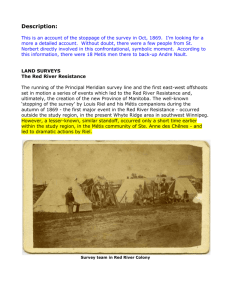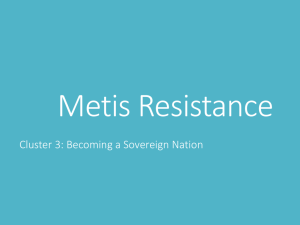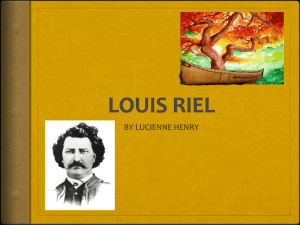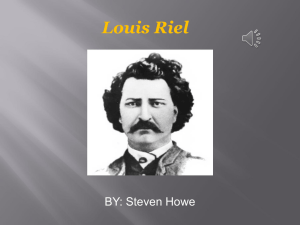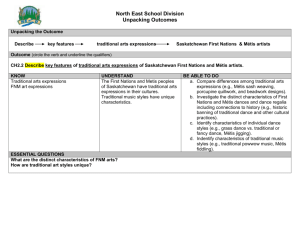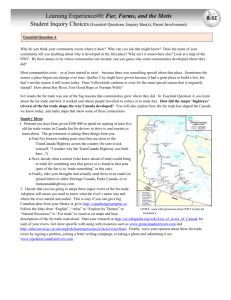191 KB
advertisement
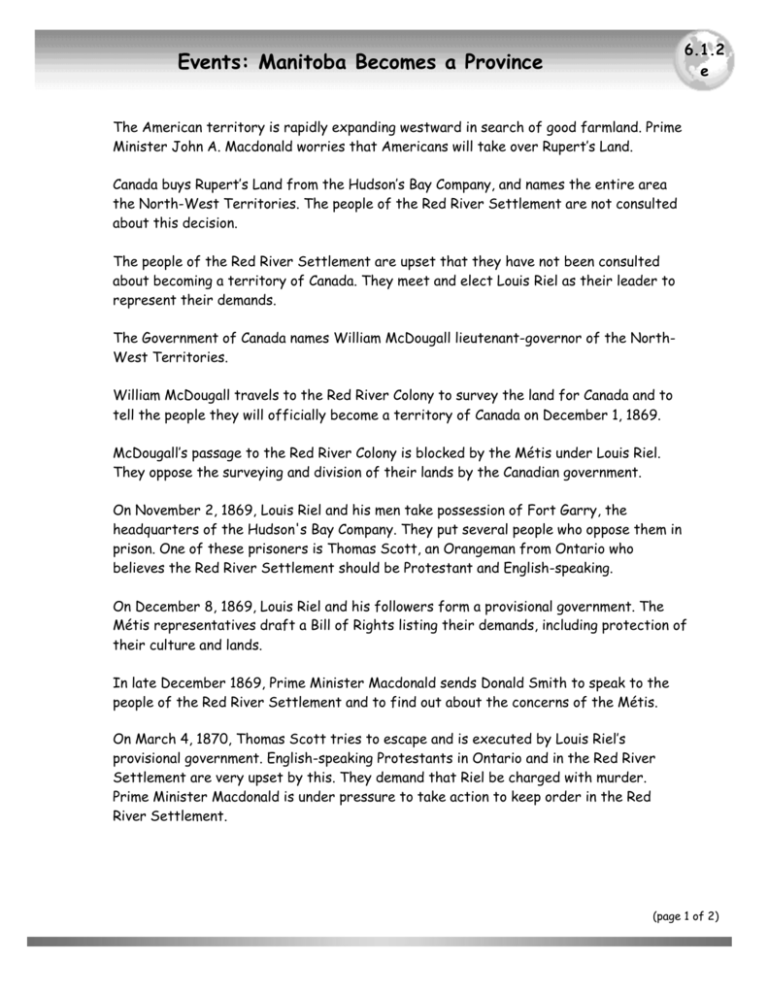
6.1.2 e Events: Manitoba Becomes a Province The American territory is rapidly expanding westward in search of good farmland. Prime Minister John A. Macdonald worries that Americans will take over Rupert’s Land. Canada buys Rupert’s Land from the Hudson’s Bay Company, and names the entire area the North-West Territories. The people of the Red River Settlement are not consulted about this decision. The people of the Red River Settlement are upset that they have not been consulted about becoming a territory of Canada. They meet and elect Louis Riel as their leader to represent their demands. The Government of Canada names William McDougall lieutenant-governor of the NorthWest Territories. William McDougall travels to the Red River Colony to survey the land for Canada and to tell the people they will officially become a territory of Canada on December 1, 1869. McDougall’s passage to the Red River Colony is blocked by the Métis under Louis Riel. They oppose the surveying and division of their lands by the Canadian government. On November 2, 1869, Louis Riel and his men take possession of Fort Garry, the headquarters of the Hudson's Bay Company. They put several people who oppose them in prison. One of these prisoners is Thomas Scott, an Orangeman from Ontario who believes the Red River Settlement should be Protestant and English-speaking. On December 8, 1869, Louis Riel and his followers form a provisional government. The Métis representatives draft a Bill of Rights listing their demands, including protection of their culture and lands. In late December 1869, Prime Minister Macdonald sends Donald Smith to speak to the people of the Red River Settlement and to find out about the concerns of the Métis. On March 4, 1870, Thomas Scott tries to escape and is executed by Louis Riel’s provisional government. English-speaking Protestants in Ontario and in the Red River Settlement are very upset by this. They demand that Riel be charged with murder. Prime Minister Macdonald is under pressure to take action to keep order in the Red River Settlement. (page 1 of 2) 6.1.2 e Events: Manitoba Becomes a Province The Catholic priest Alexandre-Antonin Taché helps Louis Riel draft a new version of the Métis Bill of Rights, asking for protection of the Catholic religion, the French language, and Métis and First Nations lands in the Red River Settlement. It also requests amnesty (pardon) for all members of the Resistance. In April – May 1870, three representatives of the Red River Settlement (Noël-Joseph Ritchot, John Black, and Alfred Scott) meet with Prime Minister Macdonald and GeorgeÉtienne Cartier in Ottawa to negotiate Manitoba’s entry as a province and to assure that Métis rights will be protected. Most Métis demands are accepted, except for Alexandre-Antonin Taché’s request for amnesty for all participants in the Resistance. Manitoba will become a province with representatives in Ottawa, bilingual government, Catholic and Protestant schools, and protection for Métis and First Nations lands. On July 15, 1870, Manitoba becomes a tiny province, with an area of about 160 square kilometres. The Métis have obtained most of their demands, and Prime Minister Macdonald has assured Canadian control over western Canada. In August 1870, a Canadian regiment under Colonel Wolseley arrives in the Red River Settlement. Louis Riel, who was forewarned of their arrival, escapes to the United States where he remains in exile for several years. He is twice elected in absentia (while absent) to represent the Red River people in Canadian Parliament. However, he cannot return to Canada to take his seat in Parliament, as he fears for his life. In 1885, Louis Riel returns to Canada to lead the Métis in a Resistance against the federal government that takes place in Batoche (now Saskatchewan). He surrenders, and is later hanged for treason in Regina. His body is returned to St. Boniface for burial. In 1912, a change to Manitoba’s boundaries to include part of the Northwest Territories enlarges Manitoba to the size and shape we recognize today. (page 2 of 2)

